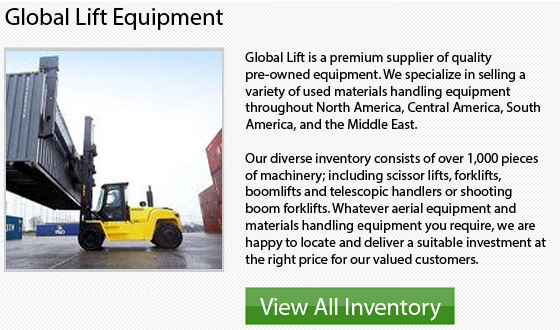
Counterbalance lift trucks are essentially forklifts that are designed with counterweight at the back of the equipment. The counterweight works to balance the weight which the forks are carrying at the front of the load. This specific design is engineered to stabilize conventional lift trucks. As far as electric counterbalance lift trucks are concerned, the counterweight is formed by the battery itself.
Counterbalance lift trucks could usually be found in every manufacturer's product range. They are usually manufactured in a variety of configurations and sizes, utilizing a variety of fuel sources. These lift trucks can with solid or pneumatic tires, and be designed with 3 or 4 wheels. They are capable of working in various applications. These lift trucks are outfitted with different types of accessories. Common attachments and options consist of: hydraulic clamps, side shifts, slip sheet attachments and fork shifts just to name some items.
The counterbalance lift truck has in fact revolutionized the entire industry of material handling. These machines are vital to the shipping and receiving centers all-around the planet since they are used for loading, stacking, unloading and horizontal transport functions. The standard warehouse lift trucks are usually used for lift heights less than 6 meters or 20 feet. There have been some recently designed models that can lift to heights 31 feet or 9.5 meters. The smaller 1-1.8 ton or 4000 pound forklifts are the main workhorses in most warehouses. These are the most popular models which most small businesses would own. The standard warehouse counterbalance forklift is a wide-aisle truck which requires around 3 meters or 11 feet to turn in.
Counterbalance forklifts are not necessarily confined to the warehouse. They are usually used for heavy use and container carrying along with basically every use in between. Counterbalance forklifts are the most versatile and widely used of all materials handling machines.
Due to their versatility and durability, counterbalance lift trucks are commonplace in a huge range of working environments, including warehousing, production and retail. Some of the industrial use consist of: timber, automotive, chemical and food industries.